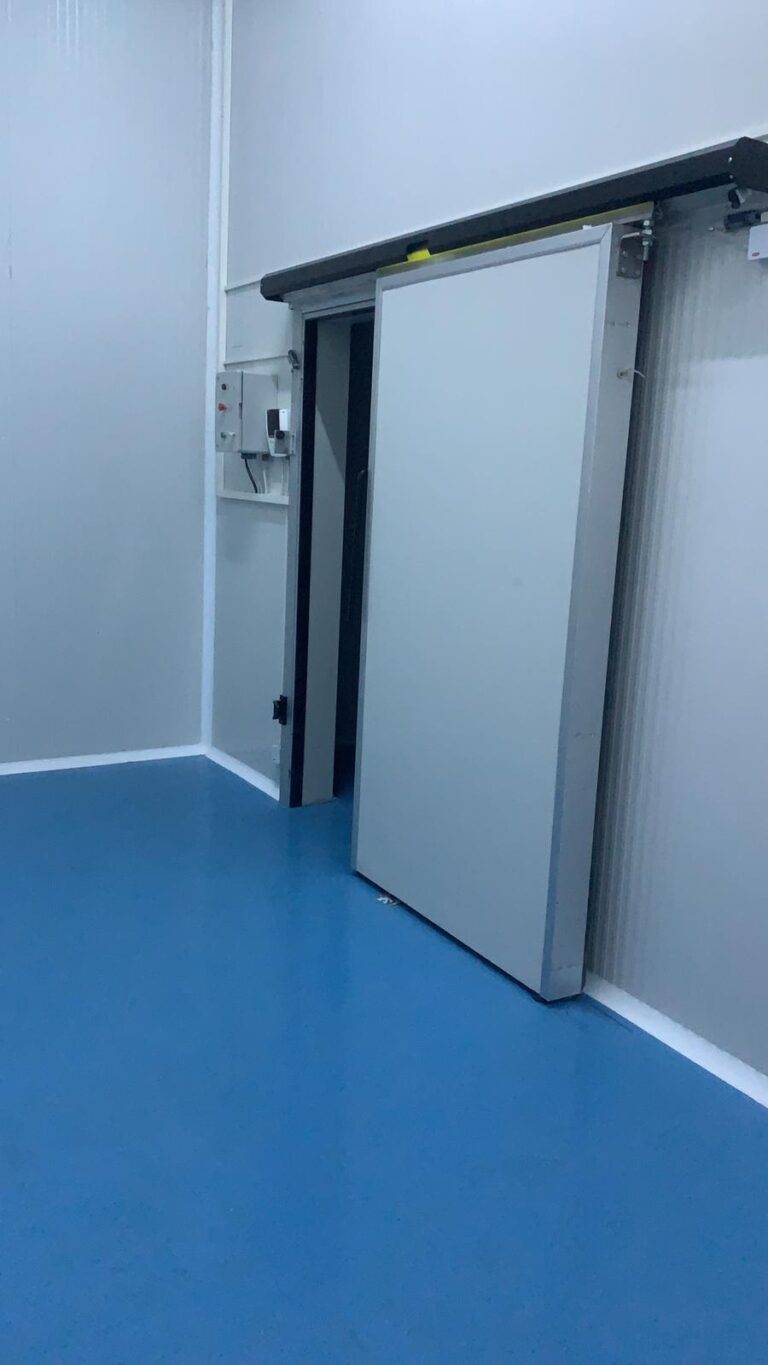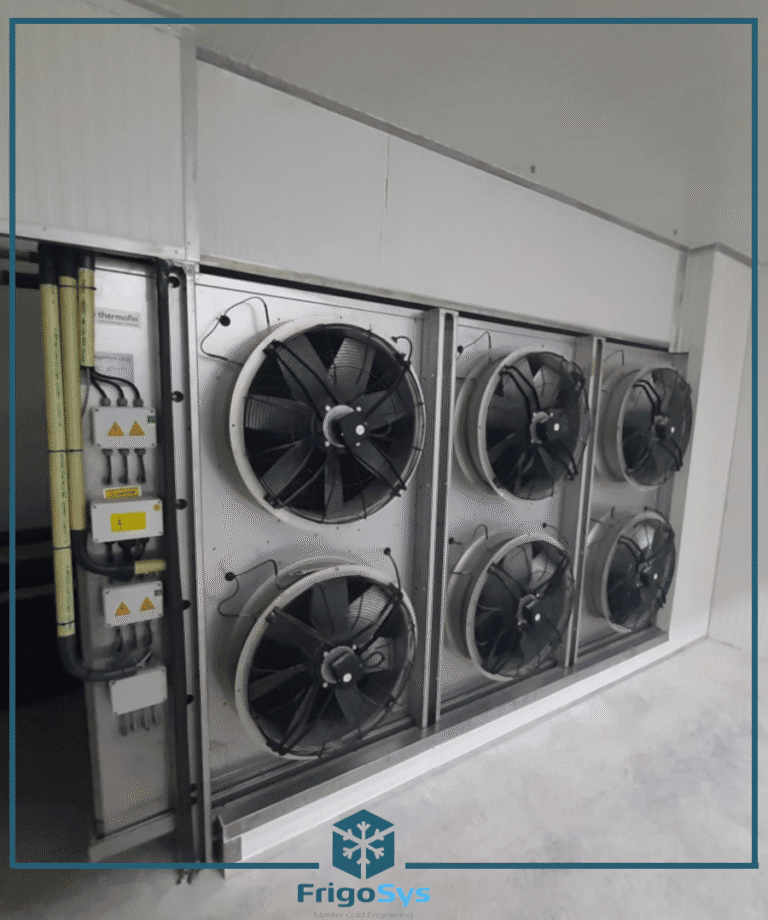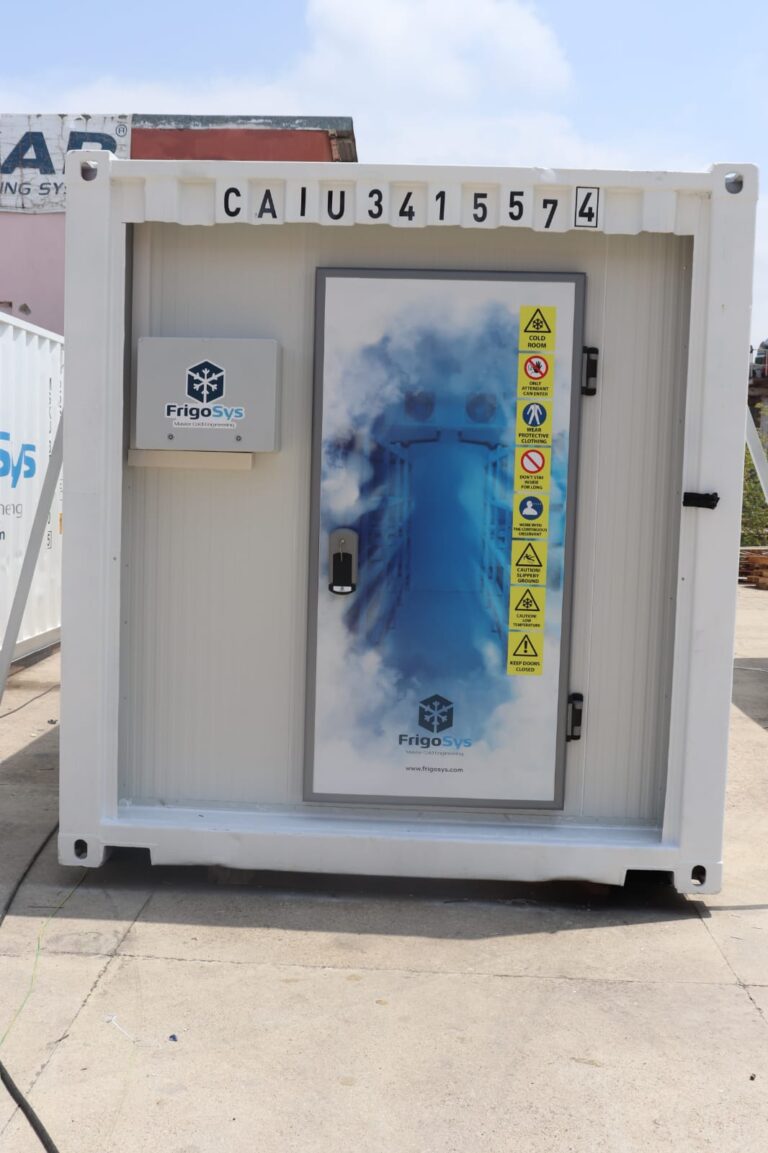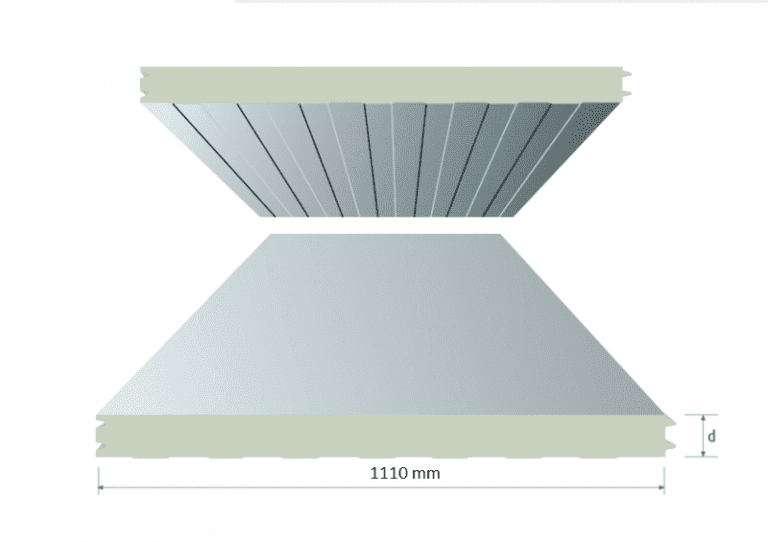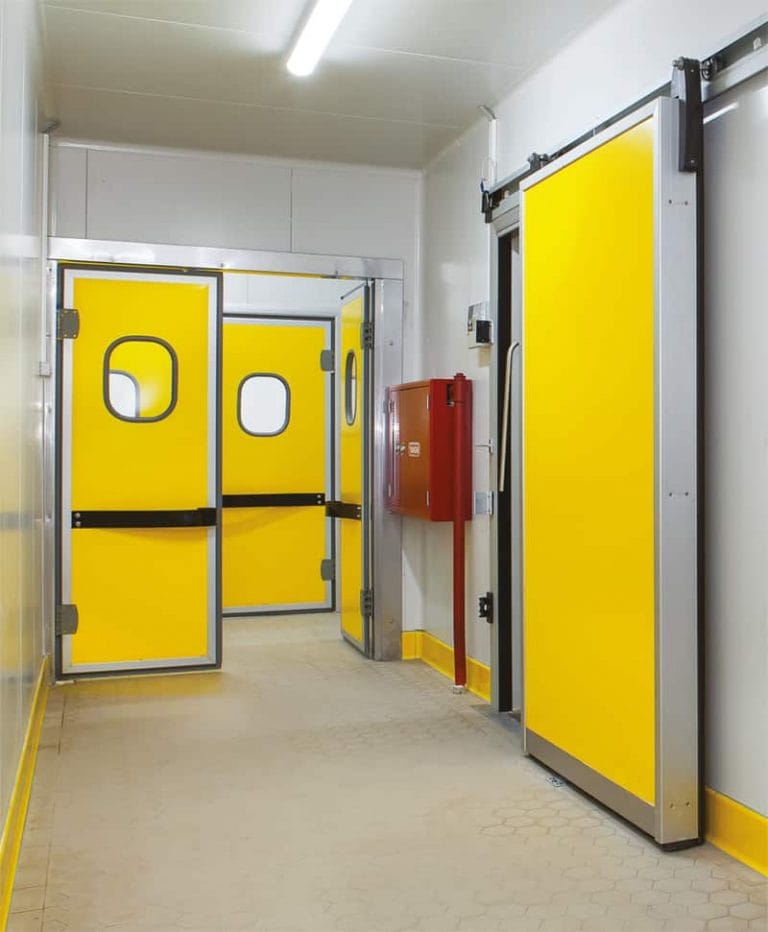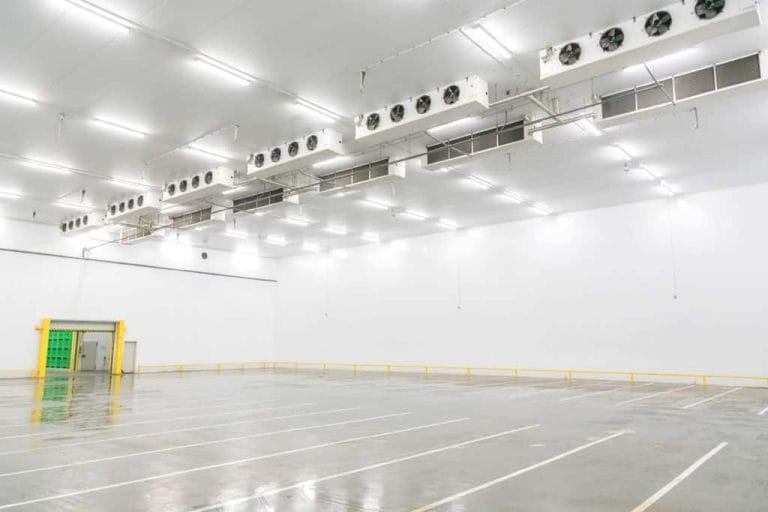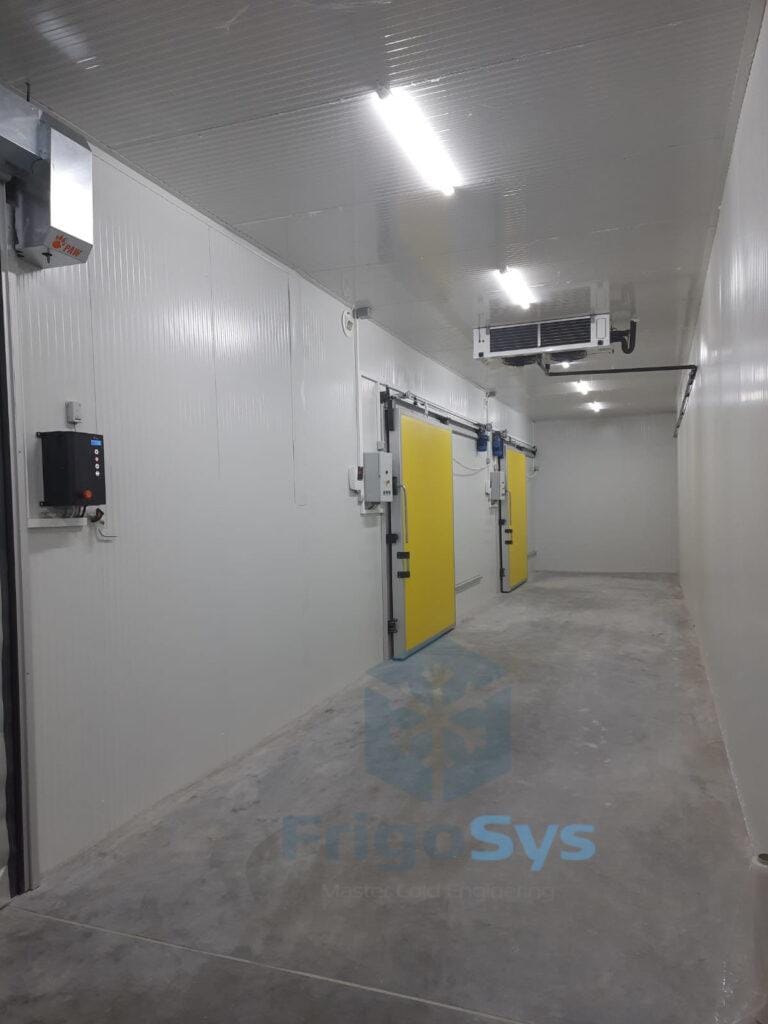Introduction to Cold Room Operations and Significance
Cold rooms are essential components in various industries, playing a crucial role in preserving the quality and extending the life of perishable goods. They are designed to maintain a consistent temperature, often below the freezing point, to store products such as food, pharmaceuticals, and chemicals that require specific climate conditions.
Core Elements of Cold Room Operations:
- Temperature Control: The primary function of a cold room is to maintain a specific temperature range to ensure the stored products remain fresh and viable for as long as necessary.
- Humidity Regulation: Alongside temperature, managing the humidity levels within a cold room is vital to prevent the spoilage or degradation of sensitive products.
- Air Circulation: Proper airflow is critical to distribute the cool air evenly throughout the space, avoiding hot spots that can lead to inconsistent preservation of goods.
The Top Common Faults in Cold Room Systems
Cold room systems, vital for preserving perishable goods, can fail due to a range of faults. Operators must understand the most common issues to promptly address and prevent them.
- Inadequate Cooling: A primary issue, inadequate cooling can stem from low refrigerant levels, faulty compressors, or blocked air filters. These problems may result in higher than desired temperatures, risking product spoilage.
- Icing and Frost Accumulation: Excessive ice and frost buildup on evaporator coils can hinder the system’s performance. Causes include frequent door openings, poor door seals, or humidity entering the cold room.
- Electrical Failings: Faulty wiring or component failures can lead to electrical issues. These faults often cause intermittent operation or complete system shutdowns, requiring immediate attention to prevent inventory loss.
- Drainage Problems: Proper drainage is essential for removing condensate. Clogs or incorrect installation can lead to water buildup and potential slip hazards or structural damage.
- Thermostat Inaccuracies: A malfunctioning thermostat can result in erratic temperature control, which not only affects product integrity but also energy consumption as the system may overcompensate.
- Door Seal Deterioration: Perished or broken door seals lead to cold air escapement and the ingress of warm air, which strains the refrigeration system and increases energy costs.
- Motor and Fan Failures: Motors and fans are critical to maintaining air circulation. Failure of these components often culminates in poor cooling and temperature irregularities.
- Sensor Malfunctions: Sensors monitor and regulate the operation of cold rooms. Faulty sensors can relay incorrect information, triggering inappropriate reactions from the system.
Addressing these common faults promptly helps maintain the efficiency and longevity of cold room systems, underscoring the importance of regular maintenance and monitoring.
Identifying and Diagnosing Cold Room Temperature Irregularities
Maintaining a consistent temperature within a cold room is crucial for preserving the integrity of stored items. However, temperature irregularities can occur, prompting the need for a careful diagnostic approach. The following steps can assist in identifying and diagnosing temperature variations:
- Monitoring Temperature Readings: Install accurate, calibrated thermometers at various points in the cold room. Continuous monitoring can help identify patterns or fluctuations in temperature that might indicate a problem.
- Checking Door Seals and Insulation: Inspect the cold room for damaged door seals or compromised insulation. Defects in these areas could lead to external air leaks, causing temperature inconsistencies.
- Evaluating the Refrigeration System: The refrigeration system, including compressors, condensers, evaporators, and refrigerant levels, should be checked regularly for signs of malfunction or inefficiency, which could affect temperature control.
- Examining Air Circulation: Ensure that the cold room’s fans and air distribution systems are functioning properly, as poor circulation can create hot spots or areas with higher temperatures.
- Investigating Thermostat Accuracy: Calibrate thermostats to ensure they accurately reflect the cold room’s temperature and respond appropriately to changes.
- Assessing External Factors: Consider external influences, such as hot weather or nearby heat-producing equipment, which may affect the cold room’s temperature.
- Utilizing Data Loggers: Employ data loggers to record temperature over time. This helps in detecting trends or sudden changes that might not be immediately apparent.
When temperature irregularities are identified, it is crucial to address the underlying cause promptly. This might involve repairing or replacing faulty components, enhancing insulation, adjusting the thermostat settings, or consulting with a refrigeration specialist. Regular maintenance and vigilance can help minimise the risk of temperature-related issues in a cold room.
Electrical Issues and Their Impact on Cold Room Performance
Electrical issues in cold rooms can lead to a variety of performance problems that compromise the storage and preservation of perishable goods. It’s essential to recognize the signs of electrical faults and understand their potential impact on cold room operations.
- Power Failures: Perhaps the most obvious electrical issue is a complete power outage. When a cold room loses power, temperatures can quickly rise to unsafe levels, putting products at risk.
- Faulty Wiring: Over time, wiring can deteriorate or become damaged. Faulty wiring can lead to intermittent power supply, which might cause fluctuating temperatures that affect stored goods’ integrity.
- Compressor Problems: The compressor is the heart of a cold room’s refrigeration system. Electrical issues that affect the compressor can lead to reduced cooling efficiency or complete system failure.
- Defective Thermostat: A faulty thermostat may not accurately gauge the room’s temperature. This can result in overcooling or insufficient cooling, leading to increased energy consumption or spoiled products.
- Lighting Issues: Cold rooms require proper lighting for safety and efficiency. Electrical problems can cause lighting failures, which not only inconvenience staff but also pose safety risks during loading and unloading operations.
- Controls and Sensors: Sophisticated cold rooms rely on electronic controls and sensors to maintain precise temperature and humidity levels. Electrical faults here can create erratic conditions unsuitable for the stored items.
When diagnosing and addressing electrical issues, always engage a qualified electrician to ensure compliance with safety standards and regulations. Regular maintenance is key to avoiding electrical problems and sustaining peak cold room performance. Ignoring these issues can result in costly product losses, energy inefficiency, and equipment damage.

The Role of Insulation and Cold Room Door Seals in Efficiency
Insulation and door seals play a critical role in the overall efficiency of cold rooms. These components are essential for maintaining the desired temperature within a cold storage space and preventing the infiltration of warmer external air, which can lead to increased energy consumption and potential spoilage of stored goods.
Insulation
- Insulation serves as a thermal barrier, reducing the transfer of heat through the walls, ceiling, and floor of the cold room. Effective insulation material should have a high R-value, indicating its resistance to heat flow.
- Properly installed insulation helps in stabilising internal temperatures, ensuring that cooling systems do not need to work excessively, which can extend their lifespan and reduce maintenance needs.
- Inadequate or deteriorating insulation can cause ‘hot spots’ or areas where temperature consistency is compromised. This often results in overcompensation by cooling units, increased energy bills, and an elevated risk of product spoilage.
Cold room Door Seals
- Door seals, or gaskets, are crucial for maintaining an airtight closure when cold room doors are shut. They prevent warm air from entering the cold environment and cold air from escaping, maintaining the cold room’s temperature.
- Regular inspections of door seals for signs of wear and tear such as cracks, gaps, or a loss of flexibility are essential. Compromised seals can lead to air leakage, moisture ingress, and ice buildup around the entry points.
- The efficiency of a cold room can be severely affected if door seals are not functioning correctly. Prompt replacement or repair of faulty door seals is imperative to ensure the integrity and efficiency of the cold room’s thermal barrier.
Maintaining effective insulation and intact door seals is vital for the efficiency, reliability, and cost-effectiveness of cold room operations. These elements are foundational in preventing energy wastage and ensuring the quality of the perishable goods stored within the cold environment.

Refrigerant Problems: Leaks, Pressure, and Charge Issues
Refrigerant is the lifeblood of any cold room’s cooling system. Without it, the system cannot transfer heat efficiently, leading to poor performance or complete failure. Technical personnel often confront three main issues related to refrigerant: leaks, pressure problems, and charge issues.
- Leaks: Refrigerant leaks are the most common issue, compromising the cold room‘s ability to maintain temperature. These leaks can occur due to corrosion, vibration causing wear on refrigerant lines, or inadequate seals at connection points. Technicians use specialised detectors such as electronic sniffers, ultraviolet dye, or soap bubble solutions to locate these leaks. It’s essential to repair leaks promptly because refrigerant loss can cause inefficient cooling and increased operational costs. Moreover, depending on the type of refrigerant used, there could be environmental concerns due to its greenhouse gas potential.
- Pressure Issues: The refrigerant cycle relies on proper pressure levels to operate effectively. If the pressure is too low, it likely indicates a refrigerant shortage or leak, while high pressure might suggest overcharging, a blockage in the refrigeration cycle, or malfunctioning equipment like a compressor or expansion valve. Pressure issues often manifest as either a warm cold room or a system that cycles on and off more frequently than it should. Pressure gauges are used to diagnose these problems correctly.
- Charge Issues: When the refrigerant charge—the amount of refrigerant in the system—is not within the manufacturer’s recommended range, the cold room won’t function as intended. Undercharging leads to an underperforming cooling system, whereas overcharging can cause strain on the compressor and eventual breakdown. Technicians must use charging scales, manifolds, and refrigerant recovery machines when adjusting the refrigerant charge to ensure it aligns exactly with the system’s specifications.
Regular checks, proper installation, and maintenance are crucial for preventing refrigerant issues and ensuring the longevity and efficiency of a cold room’s cooling system.
Signs of Compressor Failure and How to Address Them
The compressor is the heart of a cold room’s refrigeration system, and its failure can lead to significant issues. Identifying early signs of compressor trouble can help mitigate damage and extend the unit’s lifespan. Here are common indicators of potential compressor failure:
- Unusual Noises: A healthy compressor runs smoothly. If you hear rattling, knocking, or hissing sounds, this could signify mechanical problems or refrigerant leaks.
- Tripping Circuit Breaker: If the compressor is overloading the circuit, it can trip the breaker, suggesting electrical issues or a failing motor.
- High Energy Bills: An inefficient compressor may lead to a surge in power consumption, resulting in higher than normal energy bills.
To address these signs, follow these steps:
- Perform Regular Inspections: Routinely check for signs of wear, oil leaks, or corrosion.
- Check Refrigerant Levels: Low refrigerant levels can cause the compressor to overwork. Ensure it’s adequately charged.
- Test Electrical Components: Inspect capacitors, relays, and other electrical connections for signs of damage or wear.
- Listen for Noises: Use a stethoscope or similar device to pinpoint the source of any unusual sounds.
- Clean Coils and Filters: Restricted airflow due to dirty coils or filters can increase compressor strain.
- Seek Professional Help: If any signs of failure are evident, consult with a certified technician to diagnose and fix the problem.
Promptly addressing the signs of compressor failure helps prevent more severe issues, such as complete system breakdowns or costly replacements. Dedication to preventive maintenance and quick responses to the early symptoms can ensure the longevity and reliability of your cold room.
Troubleshooting Evaporator and Condenser-Related Failures
When addressing issues with evaporators and condensers in cold rooms, understanding their role is crucial. The evaporator absorbs heat from the cold room, while the condenser releases it outside the designated area.
- Evaporator Issues: Frost build-up on the evaporator coils can indicate insufficient airflow or a low refrigerant charge. Troubleshooting steps include:
- Checking for obstructions and ensuring that the fan motor is operational.
- Inspecting filters and, if necessary, cleaning or replacing them.
- Evaluating the refrigerant level and searching for leaks within the system.
- Condenser Problems: Overheating and reduced efficiency can stem from issues with the condenser. Steps to resolve these include:
- Ensuring the condenser coils are clean, as dirt and debris can insulate them, leading to overheating.
- Verifying that the space around the condenser unit is clear to allow for proper air circulation.
- Check the condenser fan for functionality, as it helps in dissipating heat.
In situations where the cold room is not maintaining temperature, direct attention to both the evaporator and condenser functions. Inconsistent or higher temperatures can be symptomatic of broader system issues affecting both components.
Electrical checks are also essential as part of the troubleshooting process. Make sure that all electrical connections are secure and that the capacitors are functioning within their rated capacity. Voltage and current readings should align with the specifications for the cold room system.
When addressing evaporator and condenser failures, always consult the manufacturer’s guide or contact a certified refrigeration technician if the problem persists beyond basic troubleshooting. Remember that handling refrigerants and high-voltage components have associated risks and should only be performed by qualified individuals.
Preventative Maintenance Strategies to Avoid Cold Room Downtime
Preventative maintenance is crucial to ensure the efficient operation of a cold room and avoid unplanned downtime, which can be costly and disruptive.
- Regular Inspections: Scheduled inspections should be a staple in your maintenance plan. Checks on the insulation, door seals, and refrigeration units can highlight potential issues before they escalate.
- Cleaning Regimes: Adequate cleaning helps to maintain airflow and hygiene standards. Condenser and evaporator coils are prone to dust accumulation, which can impact performance. Regularly clean these components to ensure efficiency.
- Temperature Monitoring: Continuous temperature monitoring helps to detect irregularities early. Automated systems can provide alerts when temperatures deviate from set ranges, allowing for timely interventions.
- Calibration: Regular calibration of your cold room’s temperature and humidity sensors ensures accurate readings, which are vital for decision-making processes and regulatory compliance.
- Lubrication: Moving parts, such as door hinges and refrigeration compressors, require routine lubrication to prevent wear and tear, which can lead to system failures.
- Staff Training: Educating staff about operational best practices can help catch issues early. A knowledgeable team can identify anomalies and implement quick fixes before problems arise.
- Preventative Maintenance Schedule: Create and adhere to a detailed maintenance schedule. This should outline all the tasks, frequencies, and responsible parties to ensure nothing is overlooked.
- Emergency Plan: Even with preventative measures, emergencies occur. Have a plan in place, including contact information for repair services, and steps for preserving stored items.
Adopting these strategies can massively reduce cold room downtime, thereby protecting your inventory and bottom line.
How to Deal with Icing and Over-frosting Challenges
Dealing with icing and over-frosting in cold rooms can be a significant challenge. These issues can lead to impaired operation, reduced efficiency, and potentially spoil stored goods. To tackle these problems, consider the following strategies:
- Regular Maintenance: Conduct routine checks to ensure the evaporator coils are clean and defrosting cycles are functioning correctly. Ice buildup can be a sign that the defrost cycle is not operating as it should.
- Check Door Seals: Ensure that door seals are intact and doors close properly. Frequent openings or damaged seals can cause humid air to enter, leading to excess frost.
- Optimize Defrost Intervals: Adjust the frequency and duration of defrost cycles based on the level of use and the humid conditions of the locale. Too frequent defrosting can contribute to over-frosting issues.
- Proper Air Circulation: Maintain clear airflow paths around products stored in the cold room. Poor circulation can lead to cold spots where icing can occur.
- Appropriate Loading: Avoid overloading the space since this can impede airflow and lead to uneven cooling and frost accumulation. Ensure the stored products do not obstruct air vents.
- Check Refrigerant Levels: Low refrigerant levels can cause the evaporator coils to get too cold, leading to ice buildup. Have a professional check and refill the refrigerant as necessary.
- Temperature Monitoring: Install reliable temperature monitoring systems to ensure the cold room maintains the optimal temperature, as fluctuations can cause condensation and frost.
- Humidity Controls: If icing occurs frequently, consider the installation of a dehumidifier to control the moisture levels within the cold room.
When addressing these issues, safety should be paramount. Personnel must ensure that any work conducted on refrigeration systems follows safety guidelines to prevent harm or damage. If the issue persists, it is advised to seek the assistance of a professional with experience in refrigeration systems.
Adopting the Right Troubleshooting Tools for Cold Room Repairs
When dealing with cold room repairs, having the appropriate troubleshooting tools is essential for efficient and effective solutions. Here is a structured list of some indispensable tools and instruments that technicians should consider:
- Thermometer and Hygrometer: To accurately measure temperature and humidity levels within the cold room.
- Refrigerant Leak Detector: Essential for identifying leaks in the refrigeration system, which can cause reduced cooling efficiency.
- Manifold Gauge Set: Used to check refrigerant pressures, necessary for assessing the performance of the refrigeration system.
- Electronic Control System Diagnostic Devices: These are required for interpreting error codes and assessing the electronic control systems.
- Voltmeter and Clamp Meter: Necessary for diagnosing electrical issues, including verifying power supply and detecting electrical shorts.
- Inspection Camera: Allows for visual inspection in hard-to-reach areas within the cold room’s structure.
- Non-contact Infrared Thermometer or Thermal Imaging Camera: These can be used to detect hot spots or insulation failures.
- Multi-tool or Screwdriver Set: For opening panels and compartments to access various components during diagnosis and repair.
- Flashlight: A high-lumen flashlight aids in inspecting dark areas within the cold room.
- Service Wrench and Pliers: Useful for manipulating valves and other components.
Each tool plays a role in a comprehensive diagnostic approach. For instance, the refrigerant leak detector can prevent the unnecessary replacement of refrigeration system components by pinpointing the exact location of a leak. Similarly, gauges are crucial in determining whether the system is under or overcharged with refrigerant, which can be a common issue.
Technicians should also ensure that they are not only equipped with these tools but are well-versed in their operations. The right tool in skilled hands can transform complex cold room faults into manageable repairs, resulting in minimal downtime and restored efficiency.
Understanding When to Call a Professional for Cold Room Issues
When operating a cold room, it’s essential to recognize when a problem can be fixed with simple troubleshooting and when it’s time to call in a professional. Some indicators that professional help is needed include:
- Inconsistent Temperature: If the cold room is not maintaining a consistent temperature despite your troubleshooting efforts, there might be a serious underlying issue such as a refrigerant leak, compressor failure, or a malfunctioning thermostat.
- Strange Noises: Unusual sounds, like banging, hissing, or buzzing, can be symptomatic of mechanical failures, loose components, or refrigerant issues. Professional diagnosis is necessary to prevent further damage.
- Ice Build-up: Excessive ice formation is not normal and could indicate problems with the defrost system, door seals, or refrigeration equipment. An expert can identify the source of the issue and resolve it.
- Water Leaks: Water around the cold room could suggest a clogged drain line or a faulty seal. These problems can lead to more severe issues if not promptly addressed by a technician.
- Electrical Problems: If the cold room is frequently tripping the circuit breaker or if the lights and control systems are inconsistent, it’s time for a professional to inspect the electrical components.
- Excessive Cycling: When the cold room’s compressor turns on and off more frequently than it should, it might be overworking due to a variety of issues, including dirty coils or a malfunctioning control board, requiring an expert’s attention.
- Visible Damage: Any noticeable damage to the cold room infrastructure or refrigeration equipment should be assessed by a professional to ensure it is safe and functioning correctly.
In conclusion, understanding which problems are within your ability to resolve and which warrant a professional’s expertise can save time, protect your inventory, and extend the life of your cold room. Always opt for a qualified and experienced technician to handle complex and potentially dangerous repairs.
Conclusion: Best Practices for Ensuring Cold Room Reliability
To maintain the reliability of cold rooms and minimize the risk of faults, certain best practices should be rigorously adopted.
- Regular Maintenance: Schedule and perform regular maintenance checks. This includes inspecting and cleaning components such as the condenser coils, evaporator coils, and fans. Regular servicing helps catch potential issues before they escalate.
- Prompt Repairs: When a component shows signs of malfunction, address the issue immediately to prevent system-wide failures. Delaying repairs can lead to more significant damage and downtime.
- Monitor Temperature and Humidity: Use reliable monitoring systems to keep tabs on temperature and humidity levels. This can prevent overworking the cold room’s cooling system and help maintain consistent conditions critical for stored goods.
- Ensure Proper Load Distribution: Overstocking or uneven storage can obstruct airflows and lead to cooling inefficiencies or system overloads. Maintaining an organized and well-distributed load preserves the effectiveness of the cold room.
- Invest in Quality Components: Use high-quality parts for replacements and repairs. Higher-end components might have a greater upfront cost, but they usually offer better performance and longevity.
- Temperature Calibration: Ensure that temperature sensors and controls are calibrated correctly to provide accurate readings and maintain the desired environment within the cold room.
- Employee Training: Train staff to recognize signs of faults and to follow operational procedures correctly. This can prevent unnecessary strain on the cold room system from human error.
By following these best practices, the reliability of cold rooms can be enhanced significantly, ensuring safe storage conditions and operational continuity for businesses that rely on them.
